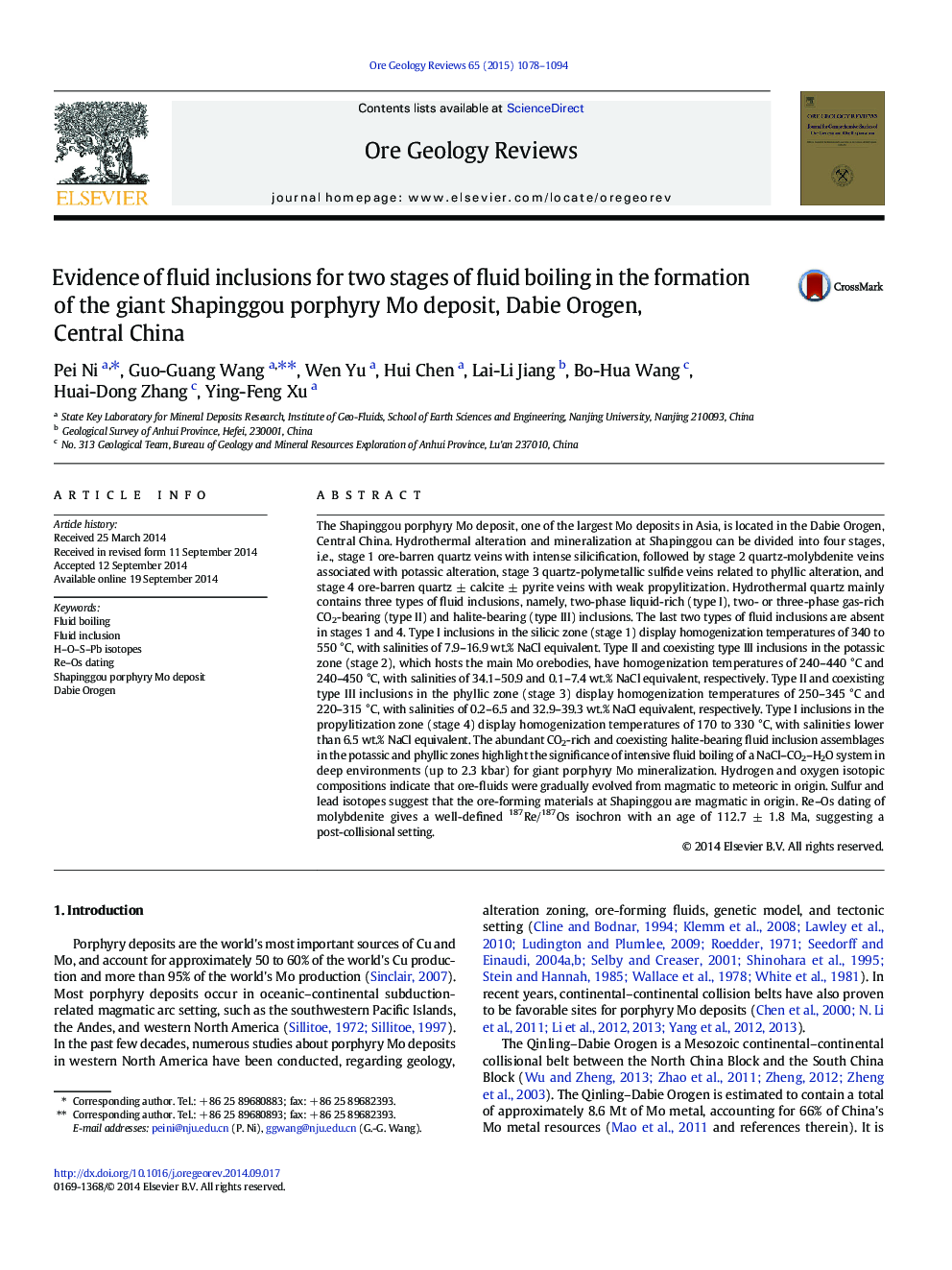| Article ID | Journal | Published Year | Pages | File Type |
|---|---|---|---|---|
| 4697162 | Ore Geology Reviews | 2015 | 17 Pages |
•Four stages of hydrothermal alteration and veins developed at Shapinggou.•Two stages of fluid boiling of NaCl–CO2–H2O system caused giant Mo mineralization.•Fluid boiling happened in a deeper environment than common porphyry systems.•Ore fluids and materials are magmatic in origin.•Re–Os age is ca. 113 Ma suggesting a post-collisional setting.
The Shapinggou porphyry Mo deposit, one of the largest Mo deposits in Asia, is located in the Dabie Orogen, Central China. Hydrothermal alteration and mineralization at Shapinggou can be divided into four stages, i.e., stage 1 ore-barren quartz veins with intense silicification, followed by stage 2 quartz-molybdenite veins associated with potassic alteration, stage 3 quartz-polymetallic sulfide veins related to phyllic alteration, and stage 4 ore-barren quartz ± calcite ± pyrite veins with weak propylitization. Hydrothermal quartz mainly contains three types of fluid inclusions, namely, two-phase liquid-rich (type I), two- or three-phase gas-rich CO2-bearing (type II) and halite-bearing (type III) inclusions. The last two types of fluid inclusions are absent in stages 1 and 4. Type I inclusions in the silicic zone (stage 1) display homogenization temperatures of 340 to 550 °C, with salinities of 7.9–16.9 wt.% NaCl equivalent. Type II and coexisting type III inclusions in the potassic zone (stage 2), which hosts the main Mo orebodies, have homogenization temperatures of 240–440 °C and 240–450 °C, with salinities of 34.1–50.9 and 0.1–7.4 wt.% NaCl equivalent, respectively. Type II and coexisting type III inclusions in the phyllic zone (stage 3) display homogenization temperatures of 250–345 °C and 220–315 °C, with salinities of 0.2–6.5 and 32.9–39.3 wt.% NaCl equivalent, respectively. Type I inclusions in the propylitization zone (stage 4) display homogenization temperatures of 170 to 330 °C, with salinities lower than 6.5 wt.% NaCl equivalent. The abundant CO2-rich and coexisting halite-bearing fluid inclusion assemblages in the potassic and phyllic zones highlight the significance of intensive fluid boiling of a NaCl–CO2–H2O system in deep environments (up to 2.3 kbar) for giant porphyry Mo mineralization. Hydrogen and oxygen isotopic compositions indicate that ore-fluids were gradually evolved from magmatic to meteoric in origin. Sulfur and lead isotopes suggest that the ore-forming materials at Shapinggou are magmatic in origin. Re–Os dating of molybdenite gives a well-defined 187Re/187Os isochron with an age of 112.7 ± 1.8 Ma, suggesting a post-collisional setting.
